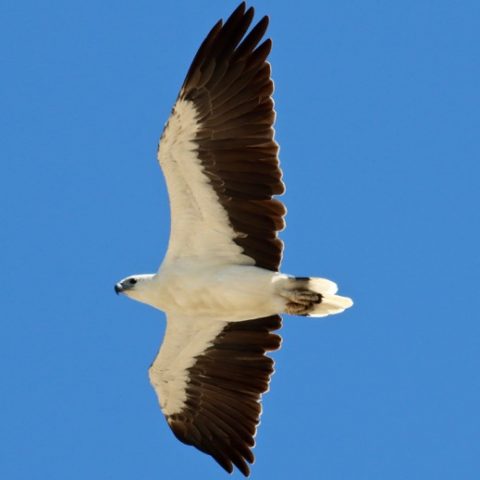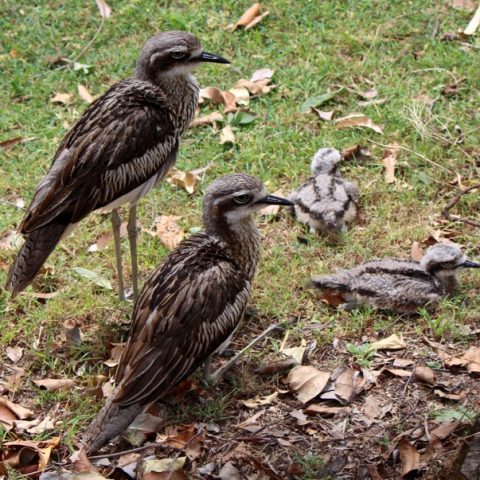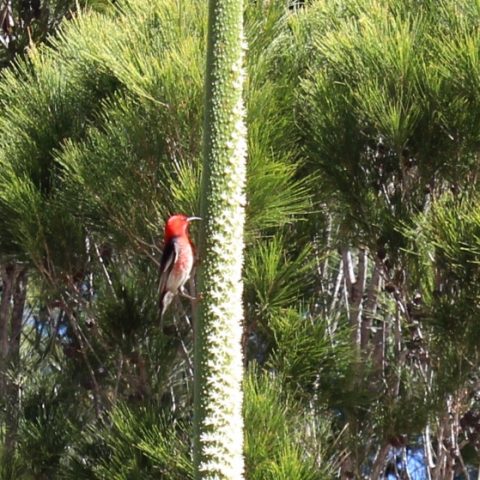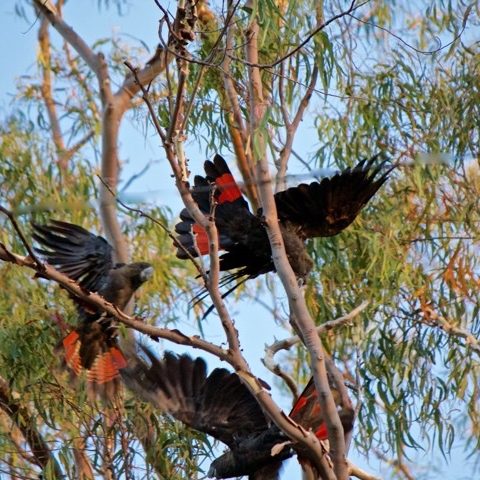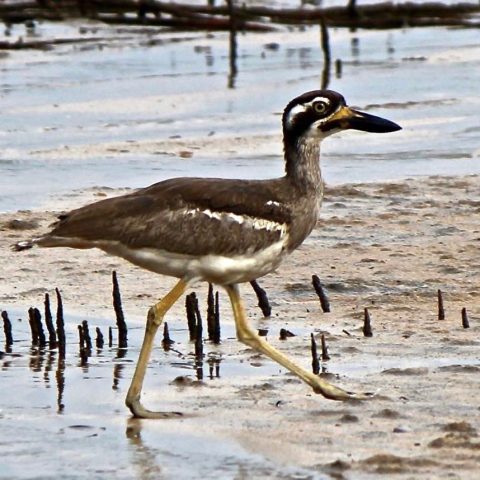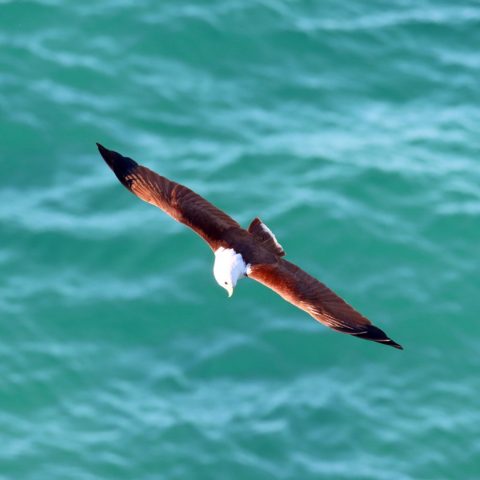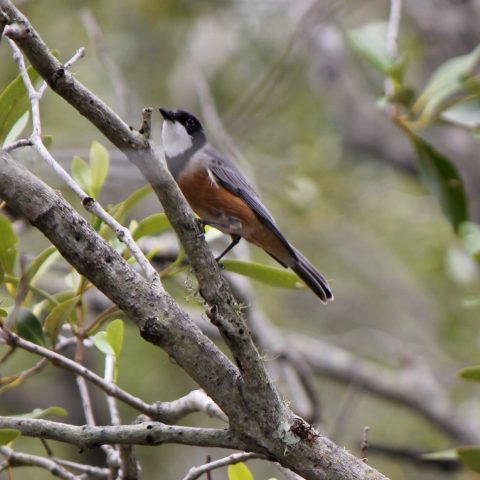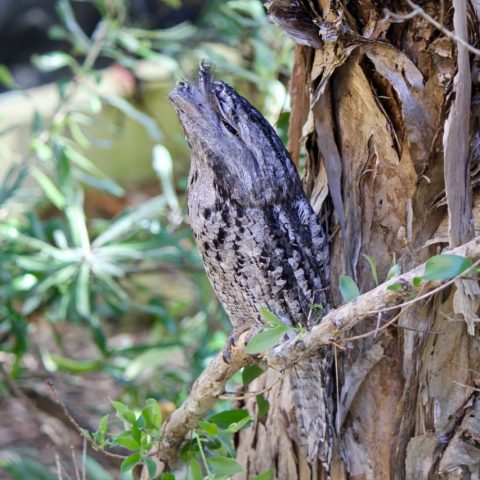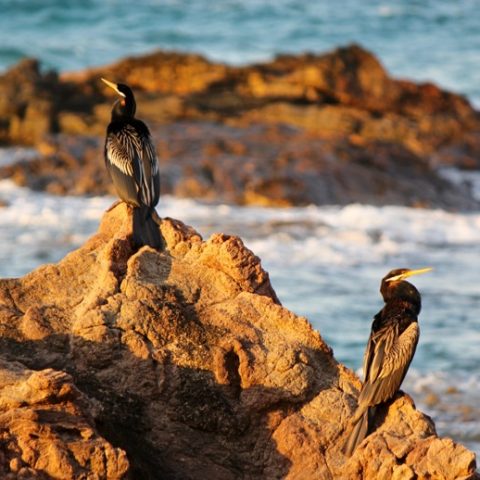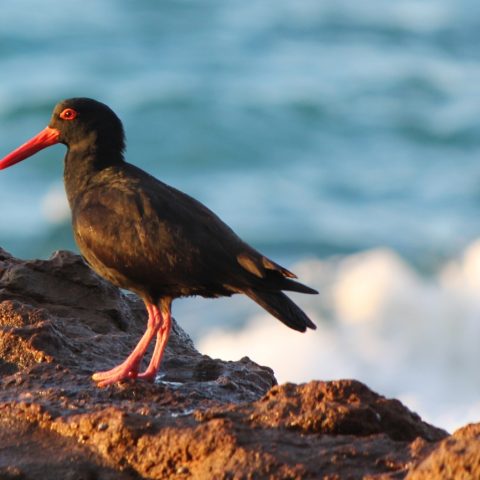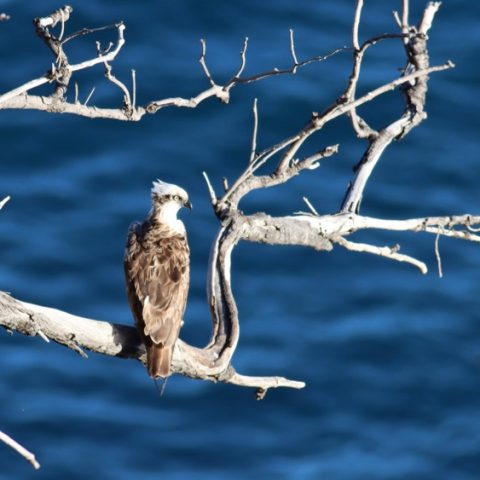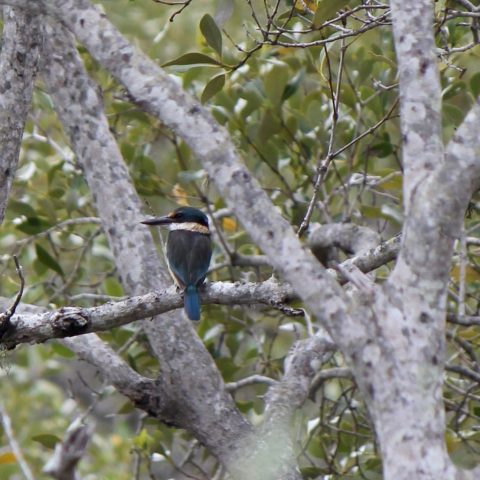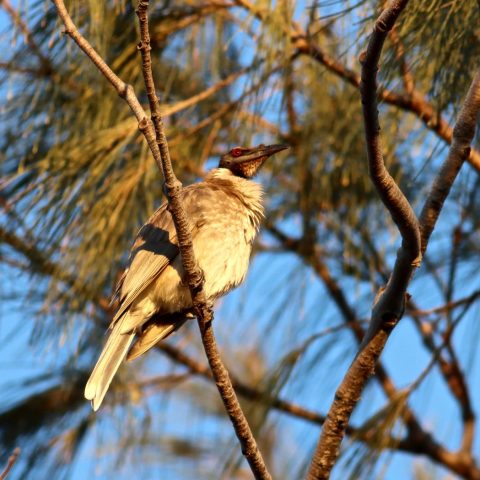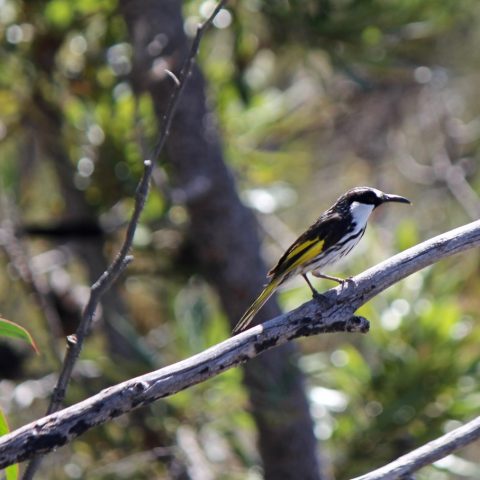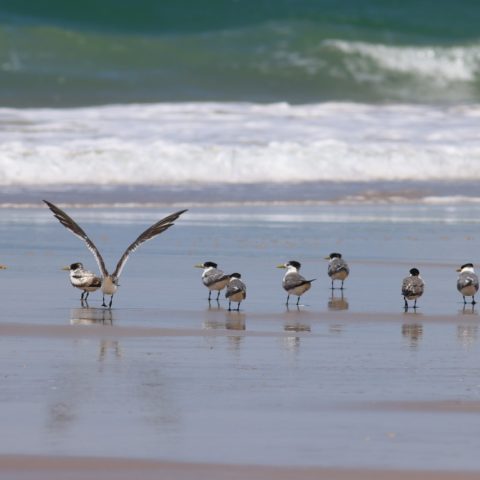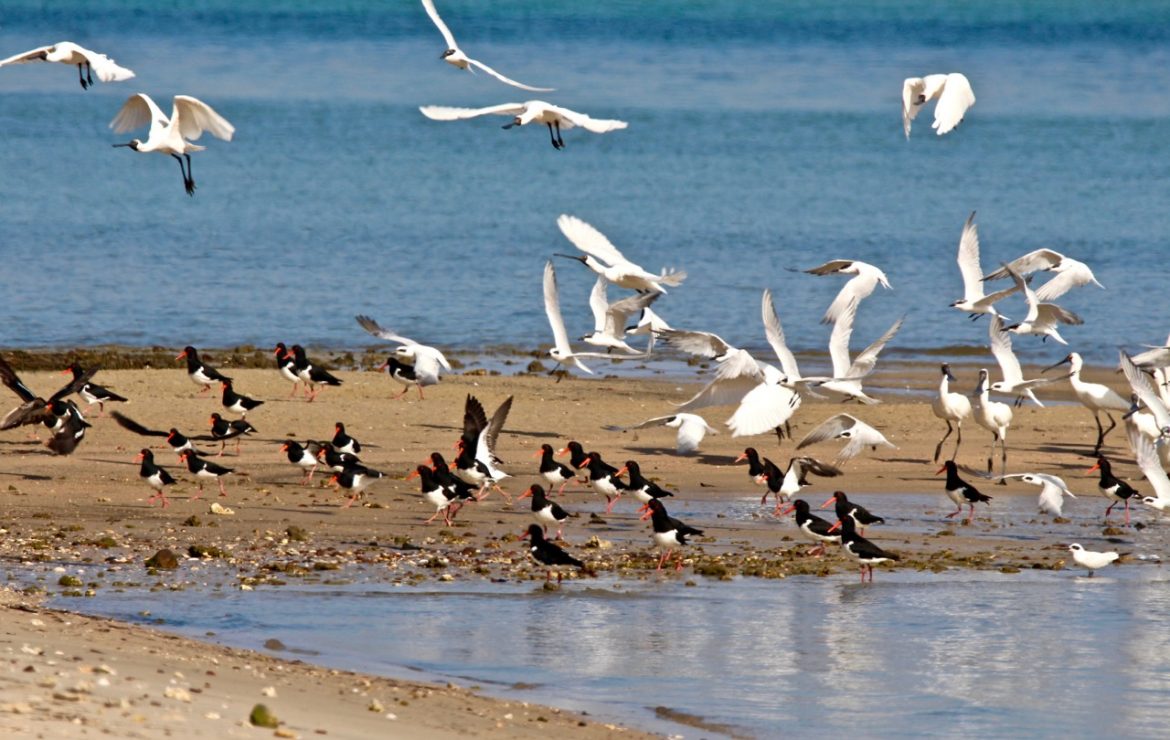
Birds of North Stradbroke Island
Where to see birds on Straddie
The townships of Dunwich and Amity Point are sited adjacent to tidal sandy flats often occupied by flocks of shorebirds – pied oystercatchers, terns, royal spoonbills, egrets, migratory godwits, whimbrels and eastern curlews, and the occasional beachstone curlew.
Raptors can be seen flying overhead and nesting in the tall gums – osprey, brahminy kites, whistling kites and white-bellied sea eagles are the most common.
The Headlands at Point Lookout are a great place to spot seabirds such as gulls, terns, gannets and cormorants diving for fish. Osprey and other raptors also hunt here. The Point Lookout walking tracks that wind through forested dunes are alive with noisy friarbirds, brown honeyeaters, figbirds, little wattlebirds, and sometimes rainbow bee-eaters and tawny frogmouths.
The eerie calls of the bushstone curlews reverberate throughout Stradbroke’s townships at night.
The Myora conservation area is located a few kilometres along the road out of Dunwich towards Point Lookout. This is another good vantage point for birdwatching. The rare littoral rainforest here has a rushing fresh water creek making its way to the mangroves, providing a haven for bird species. Look for kingfishers, figbirds, scarlet honeyeaters, flycatchers, egrets, herons, and on the rainforest floor, emerald doves and noisy pittas are seen occasionally.
The lakes – Brown Lake (Bummiera), Blue Lake (Karboora) – and the 18 Mile Swamp at the Causeway as well as Flinders Swamp are also great places to spot birds. These areas are where you may see glossy black cockatoos which commonly feed on Allocasuarina trees. The chewed-up cones under a casuarina tree is the clue that this is a favoured food tree for these increasingly rare birds.



